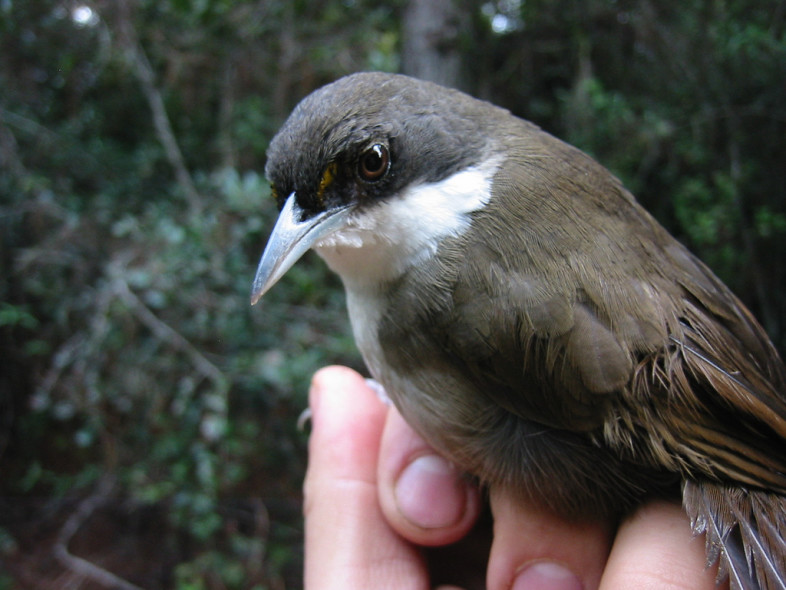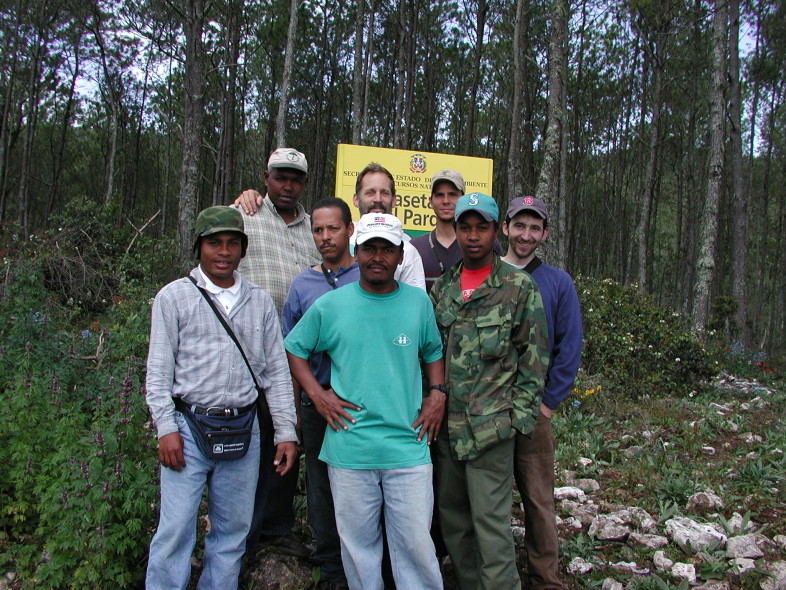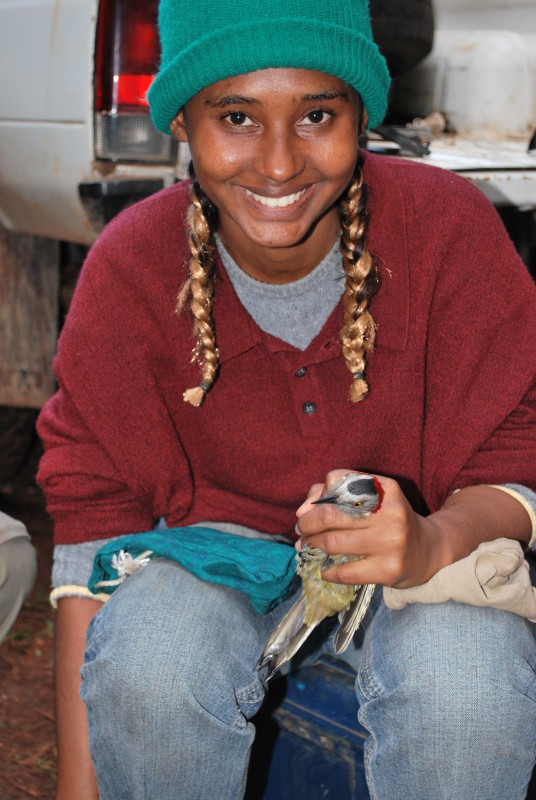In December of 1995, Chris Rimmer and Kent McFarland spent several weeks capturing and banding Bicknell’s Thrush in the cloud forests of Sierra de Bahoruco, in the far southwest of the Dominican Republic. In the years that followed, they were joined by students and scientists and conservationists, both locals and those traveling from abroad to work and learn in this remarkable landscape. Many conservation professionals in the Dominican Republic cut their teeth as field biologists under the tutelage of Chris.
The project – initially an effort to better understand the ecology of Bicknell’s Thrush in the winter – expanded to include the resident bird species as well, many of which are endemic and critically endangered. Every year for the next 15 years, with one exception, Chris returned to the same two locations in Sierra de Bahoruco, unfurled the mist nets, and waited to see what he would catch. Birds caught during previous visits, still wearing the numbered aluminum ring around their leg, were measured and released. First-time captures were given their own uniquely numbered band, measured, and set free. With patience, and over time, this process – capture, mark, release, recapture – can provide insight into the demographics of bird populations, information of great importance for conservation.

A Western Chat-Tanager (Calyptophilus tertius) banded in the Sierra de Bahoruco, Dominican Republic and ready for release.
Many of the data collected during this work have already been put to good use by scientists at VCE (and have revealed some remarkable connections between the Green Mountains and the cloud forests of the the Dominican Republic). However, as is inevitable with a data set as rich as this one (a 15-years-long study is quite rare in ecology!), some questions that could be have been addressed have remained unanswered due to lack of time. When I joined VCE last year, I had the enviable task of sorting through some of the organization’s treasure troves of data to identify key questions that we could answer with data we had already collected. The first tangible result of that effort was published yesterday in PeerJ, a peer-reviewed, open-access journal of science (in keeping with our commitment to Open Science). Our paper, ‘Assessing conservation status of resident and migrant birds on Hispaniola with mist-netting’, describes trends in population size among birds at those two sites in Sierra de Bahoruco and what those trends might mean for conservation.
In short, the news was not bad for some species – capture rates for all of the North American migrants, including Bicknell’s Thrush were stable over time – and not great for others, especially the endemic Green-Tailed Ground-Tanager, for which capture rates declined sharply over time. We found no species with increasing trends in capture rate. In our paper, we are careful to acknowledge the limitations of these data, but we do suggest that our results are grounds for a careful reconsideration of the conservation status of the declining species (in addition to Green-Tailed Ground-Tanager, we noted declines in Greater Antillean Bullfinch and Rufous-throated Solitaire). Interestingly, all of the declining species are currently ranked as low conservation priorities by the IUCN, although this is probably due as much to a lack of study as to empirical evidence that these species are secure from threats.
Publishing a paper is always cause for at least a brief celebration, but this one perhaps more so than most. Not only are we glad to see our findings now widely available for use, but with this publication we have a tangible marker of Chris’s notable achievement of having maintained, against rather steep odds, one of the very few long-term studies of tropical forest birds.



Pingbacks (1)
[…] Source: On the conservation of tropical birds and the fruits of long-term research | Vermont Center for Ecos… […]